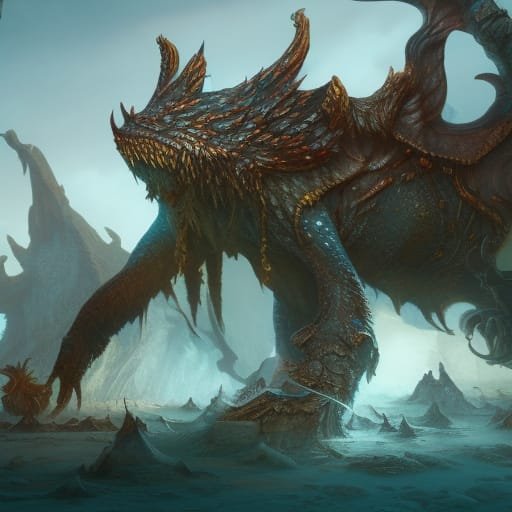The Science of Fantasy Creature Design
Introduction
Fantasy creatures are fascinating, and they play a crucial role in creating a believable world in which your characters can thrive. Of course you will always have animals that we see in our own world, that creates a sense of familiarity with the reader. But truly mystical and fantastical creatures have the ability to really send the imagination soaring.
However, creating a believable creature requires more than just imagination; it requires a solid understanding of the science behind creature creation.
In this article, I will explore:
the anatomy,
physiology, and
behaviour of fantasy creatures
Understanding these concepts can help you create more convincing and compelling creatures that will seems as real and deep as the main characters.
Anatomy of Fantasy Creatures
Anatomy is the study of the physical structure of living creatures.
When creating a fantasy creature, it is essential to consider its physical structure carefully. A creature's body shape, size, and features can determine its overall capabilities and behaviour.
For instance, a creature with a large wingspan will be able to fly, while one with long legs may be able to run quickly. When designing the anatomy of a fantasy creature, it is crucial to think about its environment, diet, and lifestyle.
Physiology
Physiology is the study of how living organisms function.
Understanding the physiology of fantasy creatures can help you create more believable creatures by considering how their internal organs work, how they breathe, and how they digest food. By examining the physiology of existing animals, you can borrow elements to create new creatures. For instance, a creature that lives in water may have gills for breathing or fins for swimming. Similarly, a creature that lives in a cold environment may have a thick coat of fur to stay warm.
Behavioural Sciences
The behaviour of fantasy creatures is just as essential as their anatomy and physiology.
When creating a creature, you should consider how it interacts with its environment and other creatures around it. You can create a more convincing creature by giving it a unique personality and behaviour traits. For example, a creature that is fiercely territorial may become aggressive when threatened, while a creature that is timid may run away.
Consistency is Key
One of the most crucial aspects of creating a believable fantasy creature is consistency.
Once you have established the anatomy, physiology, and behaviour of a creature, it is essential to remain consistent throughout the story. Inconsistencies can be confusing and jarring for readers, breaking their suspension of disbelief.
Pro tip: When creating a creature, try keeping a record of its characteristics and refer to it throughout the story to maintain consistency.
Conclusion
Creating believable fantasy creatures requires a deep understanding of anatomy, physiology, and behaviour.
By carefully considering each of these elements, you can create creatures that are both compelling and convincing. The key to success is consistency; once you have established the characteristics of a creature, it is crucial to remain consistent throughout the story. By following these guidelines, you can create creatures that will captivate your readers and bring your world to life.
Of course, you can always apply the cheat code of ‘because magic’ to explain something about a creature that would otherwise seem out of place. I would caution against this - but hey, your book, your rules.
Til next time.
If you want to learn more about building a believable and immersive fantasy world in your writing check out my other posts:
PS - Don’t forget to sign up below for updates on new book releases and blog articles. Also, drop by my Patreon and socials



